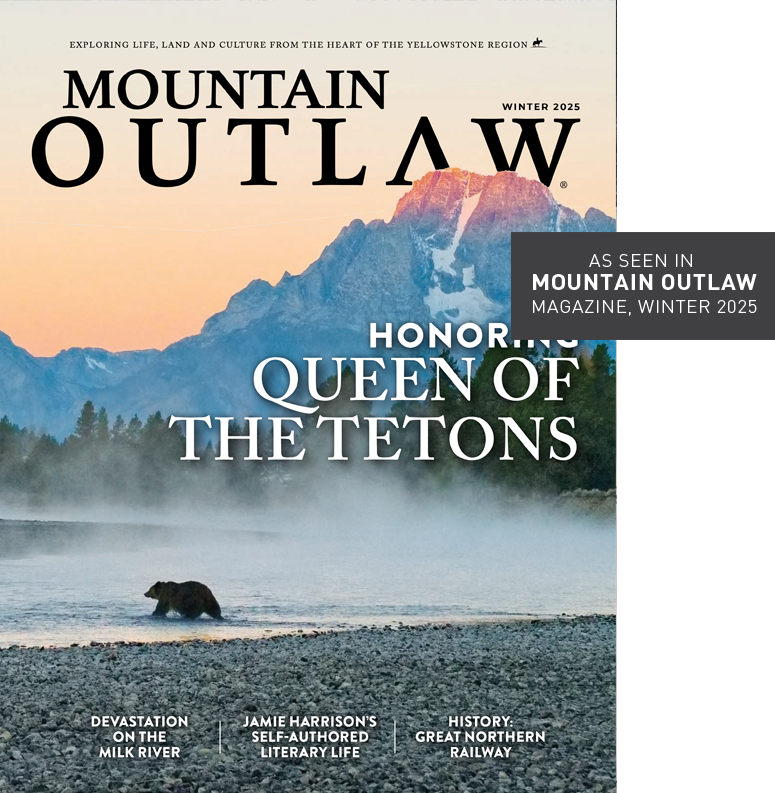A photo essay documents the Bridger raptor survey.
PHOTOS AND WORDS BY HAZEL CRAMER
Nobody believed Steve Hoffman, a passionate 27-year-old birder, when he told a group of scientists that there was another raptor migration flyway in North America. It was 1978 and the only known raptor flyways, routes that birds funnel into while migrating, were in the eastern part of the United States.
Most North American raptors (meat-eating birds with talons, not dinosaurs), migrate from the northern reaches of the continent to the south for warmer weather in the winter, and geographic features are major determinants of their flight paths. Large bodies of water or vast expanses of barren land make it difficult for migrating raptors to find food or a place to roost, and poor weather at high altitudes makes it difficult to fly. Hoffman, who in his spare time had been counting birds flying over the top of the Wellsville Mountains in Utah, knew his theory was strong.
Still disbelieving, the scientists sent Hoffman on a quest to catch, tag and release these sometimes massive birds, and collect enough data to prove hypothesis. A master’s degree and three years later, Hoffman had irrefutable evidence; he had not only proven there is migration in the West, but he had discovered the largest flyway in western North America.
Decades later, the learning continues for now-73-year-old Hoffman in the Bridger Mountains of southwest Montana, where the second largest concentration of migratory golden eagles is recorded in the U.S. Each year for the last 33, Hawk Watch International, a nonprofit founded by Hoffman, partners with Montana’s Sacajawea Audubon Society to hire a small group of surveyors to watch the skies of the Bridger flyway to count the migrating birds that pass overhead. During the two-month season from late August to the end of October, they’re required to hike 2,000 feet up through the snowless ski resort and look up and to the north for eight hours a day. In 2024, the surveyors hired to carry on that tradition were Adam Brown, Alicia Wilson and Rosemary D’Andrea.
LEFT: After the 30-minute drive from Bozeman, D’Andrea and Brown gain the ridge. “Having a long term monitoring project like this is so important,” D’Andrea said. “Thirty-three years, that’s a really long data set … so we’re able to look at long term trends of an indicator species, like a hawk, which shows us if we should be concerned [about the environment.]” RIGHT: Brown, D’Andrea and Alicia Wilson (left to right) stand for a portrait on the helipad where they work. Their shifts are split up so that at least two people count and keep watch every day, so that the third person can take their days off. Hawk Watch International and Montana Audubon raise money to pay the surveyors for their work.
LEFT: Brown, Wilson and D’Andrea pack up their things in the small patrol building surveyors call “the Penthouse” where they keep their belongings and survey supplies—and sometimes spend the night. “I think the name for it gives it too much credit, personally,” D’Andrea said, smiling. RIGHT: Brown holds up a pocket anemometer, a small gauge that measures wind speed and pressure, exposing it to the gusts flowing over the mountain range. He then recorded the reading to keep track of bird migration trends in correlation with weather.
D’Andrea and Wilson watch the skies over Tilly’s Peak and Ross Peak for raptors. “While I’ve been doing this, my IDing of raptors has gotten a lot better,” Wilson said. “First, you’d look at the shape of the bird, and then the flight mannerisms, and I would say plumage is something you’d look at last, which sometimes surprises people—but that’s because the sun catches, and [what you’ll see] isn’t the true color of the bird.”
LEFT: Hoffman updates the species count after spotting the third sharp-shinned hawk of the morning. “The average numbers of migrating birds in the Bridgers have declined,” Hoffman said. “That’s one of the big findings of this project is that we’ve seen a 35-40 percent decline in [migrating] golden eagles over that 30-plus-year period.” RIGHT: Wilson and Brown descend the trail back to their cars. “It was a really cool experience,” Brown said after finishing out the season. “It’s funny, before, [my relationship to] the Bridgers was a little bit of mountain biking, a little bit of trail running or skiing, but now it’ll always represent the fall that I spent up there, my home away from home, counting birds.”

